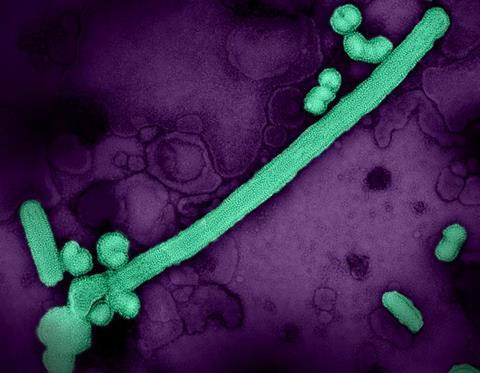Influenza A virus particles strategically adapt their shape—to become either spheres or larger filaments—to favor their ability to infect cells depending on environmental conditions, according to a new study from National Institutes of Health (NIH) scientists. This previously unrecognized response could help explain how influenza A and other viruses persist in populations, evade immune responses, and acquire adaptive mutations, the researchers explain in a new study published in Nature Microbiology.

The study, led by intramural researchers at NIH’s National Institute of Allergy and Infectious Diseases (NIAID), was designed to determine why many influenza A virus particles exist as filaments. The filament shape requires more energy to form than a sphere, they state, and its abundance has been previously unexplained. To find the answer, they developed a way to observe and measure real-time influenza A virus structure during formation.
The researchers found:
- Influenza A viruses rapidly adjust their shape when placed in conditions that reduce infection efficiency, such as the presence of antiviral antibodies or host incompatibility.
- A virus’ shape is dynamic and impacted by its environment, rather than being fixed by strain, as commonly believed.
- The study assessed 16 different virus-cell combinations that resulted in predictable shape trends.
Prior experiments by the research team showed that influenza A virus filaments can resist inactivation by antibodies, and the team is working to understand exactly how antibodies influence shape and infection efficiency. They also anticipate learning how viral mutations affect the shape of the virus. Many other viruses—such as measles, Ebola, Nipah, Hendra and respiratory syncytial virus—also incorporate a mixed-shape infection strategy, the researchers note.







No comments yet